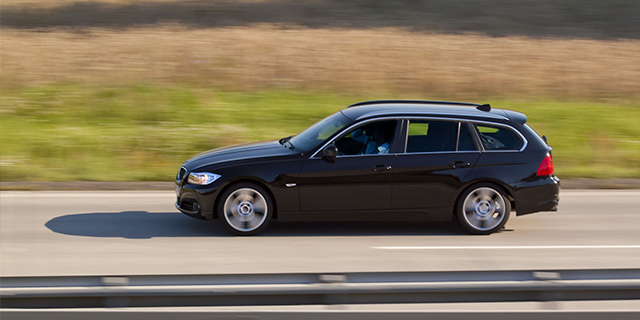It’s not always easy to understand how car tax bands work, especially as the rules seem to keep changing. If you’re not sure how much car tax you need to pay, it can make the business of buying a new or used car, even trickier.
So, because we like life to be straightforward, here’s our clear and easy to understand guide to car tax bands.
Do I need to pay car tax?
Call it what you will – car tax, road tax, or vehicle excise duty as it’s officially known – the rules on taxing your car are pretty clear. If you drive a car in the UK, or have it parked on the road, it needs to be taxed.
The only time you won’t need to pay, is if you’ve declared a statutory off road notification (SORN), or if it falls into an exempt category.
How are road tax bands calculated?
The cost of vehicle excise duty (VED) depends on when your car was registered and its CO2 emissions.
The current rules have been in place since April 2017 but it’s been announced that diesel cars registered from April 2018 will move up one tax band in their first year if they fail to meet the latest test requirements in what’s known as the ‘Euro 6 emissions standards‘.

Cars registered on or after 1 April 2017
You’ll have to pay a ‘first-year rate’ which is based on your car’s CO2 emissions. After that, you’ll pay a standard flat rate of £140. Only electric cars with zero emissions will be exempt after this.
If your car costs £40,000 or more, then you’ll have to cough up an additional £310 on top of the standard rate for five years (even if it emits zero emissions); after that, car tax is charged at the usual standard rate.
Here’s a breakdown of what you can expect to fork out:
CO2 emissions (g/km) Petrol and diesel cars /Alternative fuel cars
| First year rate only | ||
| 0 | £0 | £0 |
| 1-50 | £10 | £0 |
| 51-75 | £25 | £15 |
| 76-90 | £100 | £90 |
| 91-100 | £120 | £110 |
| 101-110 | £140 | £130 |
| 111-130 | £160 | £150 |
| 131-150 | £200 | £190 |
| 151-170 | £500 | £490 |
| 171-190 | £800 | £790 |
| 191-225 | £1,200 | £1,190 |
| 226-255 | £1,700 | £1,690 |
| Over 255 | £2,000 | £1,990 |
Standard Rate if cost is £40,000+ (for five years)
| Rates for second year onwards | ||
| Petrol or diesel car | £140 | £450 |
| Alternative fuel car | £130 | £440 |
| Electric car | £0 | £310 |
Cars registered between 1 March 2001 and 31 March 2017
If this applies, then your car tax will be based on fuel type and emissions – here are the costs at a glance:
| Band | CO2 emissions (g/km) | Petrol and diesel cars | Alternative fuel cars |
| A | Up to 100 | £0 | £0 |
| B | 101-110 | £20 | £10 |
| C | 111-120 | £30 | £20 |
| D | 121-130 | £115 | £105 |
| E | 131-140 | £135 | £125 |
| F | 141-150 | £150 | £140 |
| G | 151-165 | £190 | £180 |
| H | 166-175 | £220 | £210 |
| I | 176-185 | £240 | £230 |
| J | 186-200 | £280 | £270 |
| K | 201-225 | £305 | £295 |
| L | 226-255 | £520 | £510 |
| M | Over 255 | £535 | £525 |
Cars registered before 1 March 2001
Car tax is based on engine size for cars registered before this date, so if your car has an engine smaller than 1549cc, then you’ll pay £150. Anything bigger and your tax will set you back £245.
If you’ve got a classic car made before 1 January 1977, then you’re exempt from car tax.








